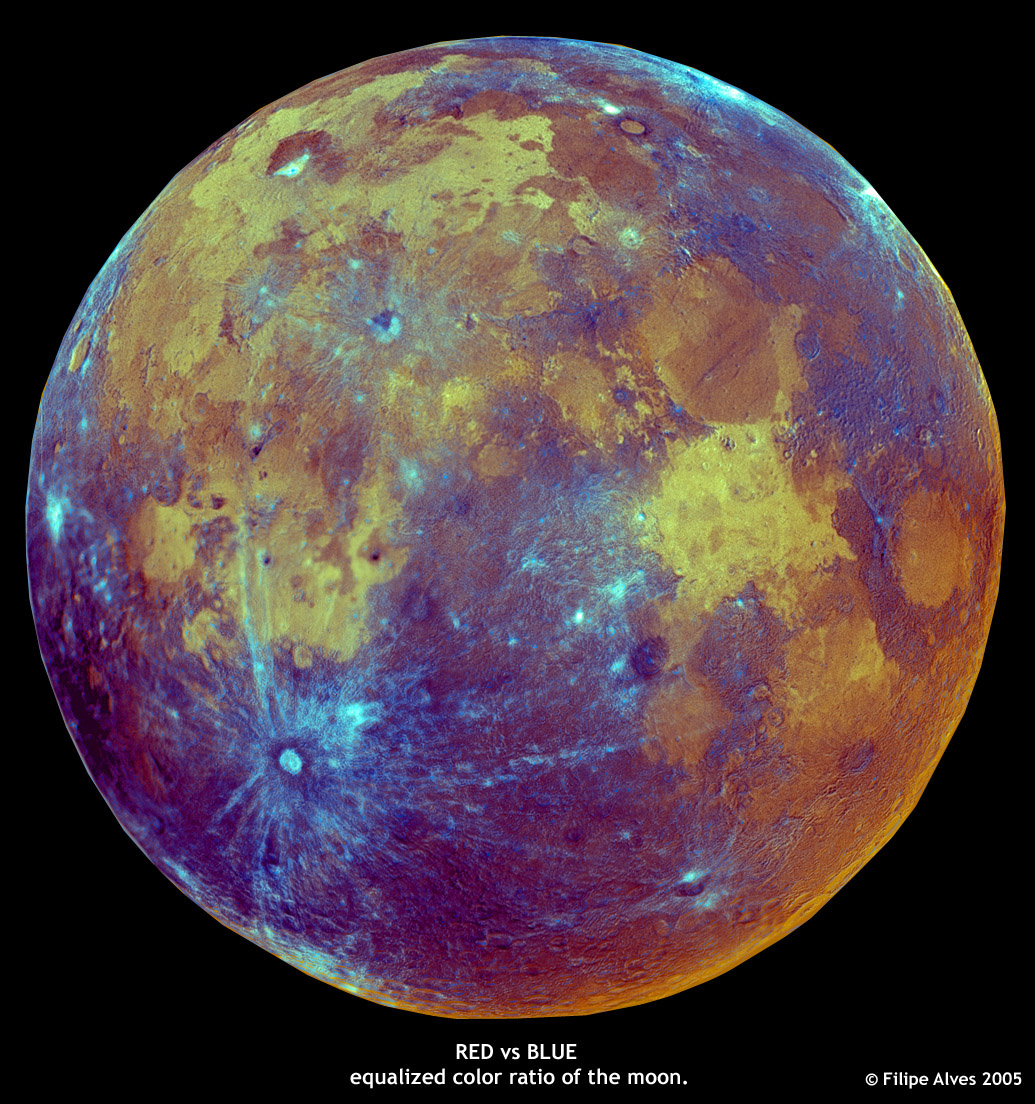 image by Filipe Alves
image by Filipe Alves
This is one of the most remarkable lunar images I have ever seen. Its colors are astronishingly compelling, the rays of Tycho seem to float over the surface, and it looks like a sunset glow on the southeast limb. This magical image was taken and composed by the explorer of lunar colors, Filipe Alves. Unlike many lunar color images that are composited from separate images through three filters, Filipe made this one with only two filtered views. Here is his description: Here I send you an unusual view of the moon, created by using the ratios between red and blue wavelengths translated to a luminance image; redder material is darker and bluer material is lighter, the color in the image translates the absolute albedo of the surface, with the bluish tones being bright material, and the reddish or yellowish tones darker material…. inverting all this relevant information is important because it enables one to see in detail geologic features in a way that color perception never permits.
The Moon appears very different than in other color images. In addition to the sharp deliniation of different flows in Mare Imbrium, there are strange purple halos around Plato, Geminus and Purbach(?), there is a pie-shaped colored wedge in Copernicus, and what in the world is happening at Theophius? I do not understand all the effects in this image - it will need to be carefully compared with traditional color views to identify what is happening. But it is beautiful! Well done, Filipe!
Note: This is another wide image - expand your viewing window.
Technical Details:
TMB 7″ Apo, Atik 16HR using Red and Blue filters. Mosaic of 7 images stitched together in Photoshop after color enhancement.
Related Links:
Filipe’s web site.
Yesterday's LPOD: Different Populations of Lunar Craters
Tomorrow's LPOD: Not Dr. Suess
COMMENTS?
Register, Log in, and join in the comments.



